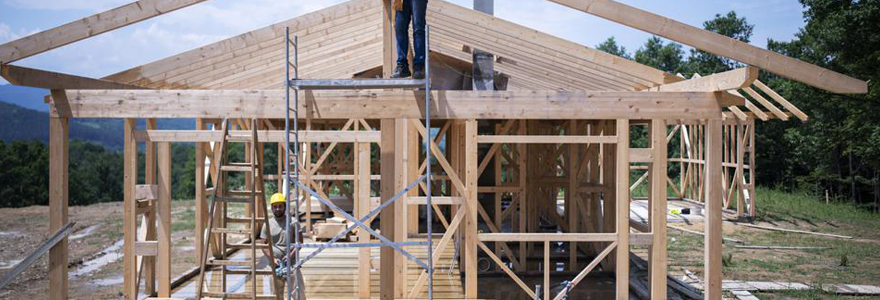
Building a house is a hectic and demanding project that may require professional assistance. House construction in any location, even house construction Cannes, is an elaborate process that follows specific steps. Below is a step by step guide to the home building process;
Preparation and foundation
Before starting the home construction process, you must complete some preparation tasks after finding and acquiring the lot or piece of land. Preparation helps ensure that the building process moves swiftly and everything is done right. Below are some important things you must do to prepare for the building process;
• You must obtain the necessary permits from your local authorities. Note that the licenses and requirements may differ depending on your home’s location.
• You must also research the type of house you want to build, depending on your family’s needs, location, budget, and a host of factors.
• Once you have determined the type of home you wish to build, you may figure out the architecture. Doing this requires special skills. Therefore, you may benefit from hiring an architect or expert. You can also design your own house. It doesn’t matter if you are building for the first time or conducting a renovation.
• Remember that building a home is a huge project. It requires a lot of labour. Therefore, part of the preparation process is hiring the building team. You can get a contractor who will acquire the perfect workforce on your behalf. You can choose between a general contractor or a custom home builder. A contractor will help you get estimates for labour and materials your home building project will require. He will also vet and hire the subcontractors (builders) and assign tasks to them. A good contractor will also ensure the building team meets deadlines and gets you the best project outcome.
• After working out all the preparation details above, the project will start by clearing the lot to remove debris, vegetation, trees, and rocks from the intended building site.
• From there, you must level the site by filling in any holes to ensure the entire site is levelled.
• Finally, you can end the preparation stage by laying the foundation. The materials used and how this process is conducted depends on the type of home you wish to build. Remember that the foundation is one of the most important parts of a home. A weak foundation could compromise the entire project now or in the future. For this reason, when the foundation is complete, inspectors will visit the site to ensure that it is up to code and properly installed. The inspection may be done repeatedly, depending on the type of foundation. The building process can only proceed once the inspectors have given the go-ahead. You may not need to conduct these preparation steps for a renovation project.
Rough framing, plumbing, electrical HVAC, and insulation installation
The next step is completing the home’s rough framing. This is where the floor system, walls, and roofs are constructed. These components of a home are known as the shell or skeleton. The sheathing is also applied to the exterior walls and completed with protective wraps. From there, you must install the pipes, wires, sewer lines, water supply lines, vents, HVAC vent pipes, and the overall HVAC system. You must also install the bathtubs, taps, shower units, and other plumbing system elements. This is also the time to invite the electrician over to install the receptacles for outlets, lights, switches, and other electrical components. Once all this is completed, you must also invite an inspector to check out the framing, plumbing, electrical, and mechanical systems for compliance with the construction codes depending on your location and state construction laws. The inspections may be conducted separately. From there, the next step is installing insulation. The first thing you must do is choose the type of insulation you need for your home. Here, you must be careful as insulation significantly affects your home’s comfort and energy efficiency. You can always seek professional assistance when choosing the right insulation and installing it.
Completing the drywall, interior fixtures and exterior finishes
Once the steps above are completed, you can hang and tape the drywall. You can also complete the texturing, apply the primary coat, and start the exterior finishes by installing bricks, stucco, stone, and siding. From there, you can return to the interiors to finish the trim for doors, window sills and decoration. This is also the perfect time to install the cabinets, vanities, fireplace mantles, sinks, and surrounds. Finally, you can apply the final coat of paint to the interior walls. You can also do the wallpaper, depending on your vision for your house. Once the interiors are completed, you can proceed to the exteriors. Here, the driveways, walkways, and patios are constructed. This is usually done last because it requires heavy equipment. The next step is the installation of hard surface flooring, countertops and installing bathroom fixtures.
Finishing touches
After completing the steps above, your home is basically complete. Everything else counts as finishing touches. Some things you can do to complete the project is exterior grading like yard landscaping, door installation, carpeting, and final cleanup. However, the process does not end here. An inspector must visit the home and complete a final inspection. After the inspection, you will be issued a certificate of occupancy, depending on your location and state laws. From there, you can also do a final walkthrough of the house with the head contractor to check for any necessary changes and elements that need to be adjusted. The home building process is hectic and quite demanding. Whether you choose to design your own house or invite an architecture expert, you could always benefit from professional assistance from start to finish. The same applies to a renovation project. Despite the stresses involved in the construction process, it is also a satisfying experience.